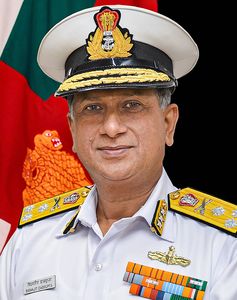MUCH HAS BEEN written about the Agnipath scheme of recruitment into the armed forces, ever since it was announced. At that time, some gave the impression that it was ill-conceived, and prematurely launched without serious thought. They should know that governments and armed forces in democracies do not work like that.
Under the scheme, young people between the ages of seventeen and a half and twenty one will have an opportunity to serve in the armed forces for four years. The recruits would be called Agniveers during this period, and 25 per cent of them would be re-inducted, on a merit-cum-volunteer basis, for a period of 15 years, which would be pensionable. This scheme would be the only method of recruitment of personnel below officer rank (PBOR).
Agniveers would have a truncated but holistic boot-camp and professional training, sufficient for envisaged roles during their four-year stint. Those who are re-inducted would specialise further in their respective trades. The recruits would be entitled to a slew of benefits through a skill-based certification under the aegis of the National Council for Vocational and Educational Training (NCVET), in addition to academic credits that would enable the pursuit of higher education after they leave. They would also have a significant sum of money available to them to fund their education, or even start a small enterprise. The [state] governments, paramilitary forces, police, merchant navy and private organisations will find the disciplined ex-Agniveers to be a superb resource pool.
The Navy was the first to recruit Agniveers and had set a target of recruiting 20 per cent women Agniveers in each batch. The first batch of 2,585 trainees, which was inducted in November 2022, and graduated in March 2023, had 247 women recruits. This is perhaps because [there were] some apprehensions in the minds of aspirants [that] may have remained unanswered, considering it was the first batch.
The second batch, inducted in June 2023 and currently undergoing training at INS Chilka, has 452 women trainees out of a total batch strength of 2,637. It is significant that just three women recruits have withdrawn from training in INS Chilka so far. Women Agniveers have also done exceedingly well at professional schools. Reports indicate that women Agniveers are highly motivated and do not wish to be identified as any less capable than their male counterparts. Many look at the Agnipath scheme as a stepping stone to becoming an officer.
The first batch of Agniveers has been posted to Naval units and will soon step onboard ships. They will perform duties without any dilution of standards. Induction of women in larger numbers is inescapable if we are to see more gender equality, not just in numbers but also in competence. The Navy has left no stone unturned in planning for this changed recruitment scenario.
The Agnipath scheme is firmly in place.
The author retired as commander-in-chief of the Eastern Naval Command in July.



